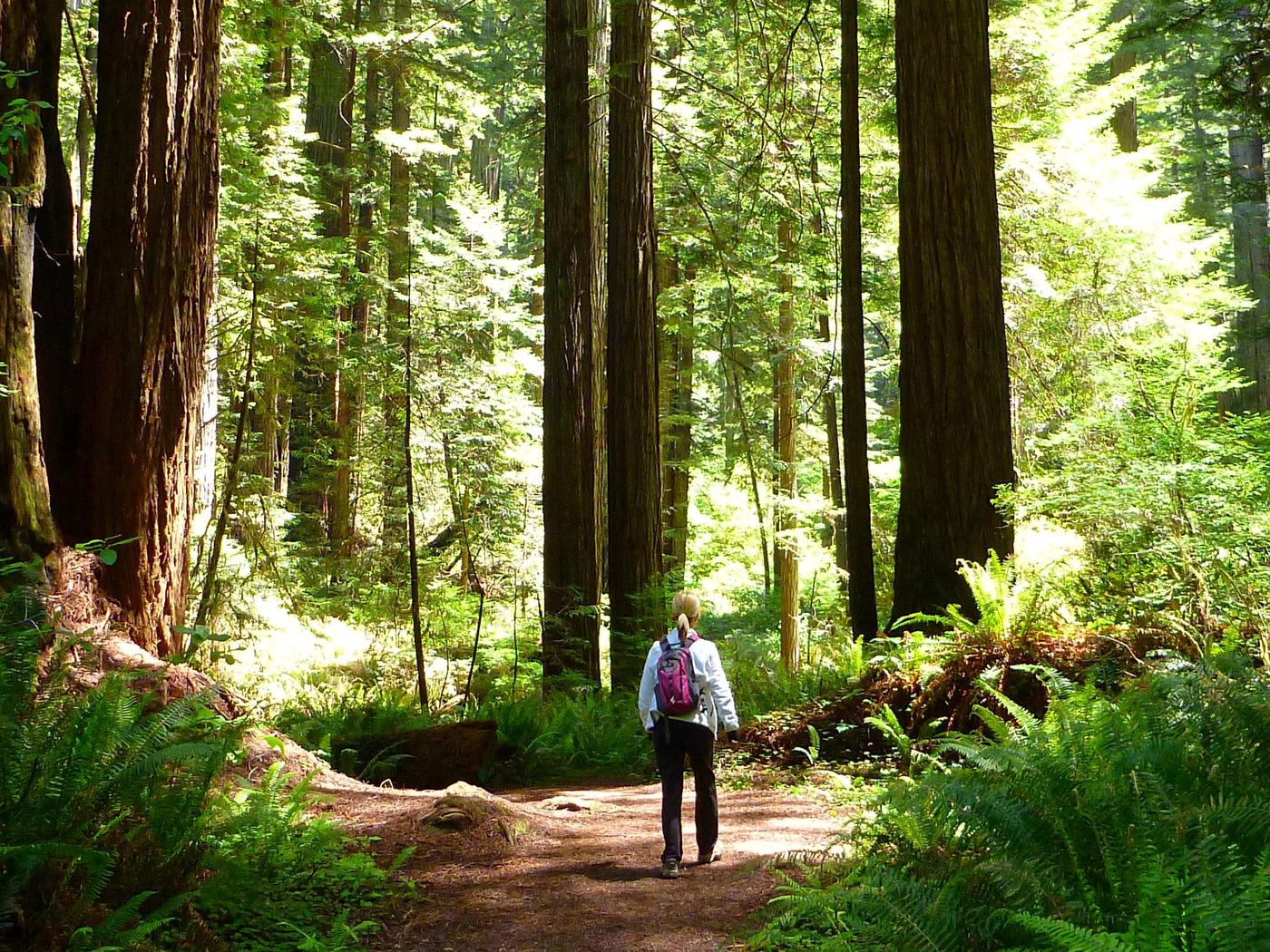

See this webpage for an overview of major forest trees and types in California. We hope to help landowners improve their stewardship of forest lands and educate the public on management of public forests in California. A strategic goal of the University of California Division of Agriculture and Natural Resources is to help sustain the resilience of the forest ecosystems of California by working in partnership to provide research based information on forest ecosystems and growth, vegetation management, wildlife, plants, insects and disease, wildfire, streams, roads, climate and policies to help reduce these threats.

Managing California's forests to withstand the threats of conversion and population growth requires partnerships between forest land owners, agencies, research institutions and the public. Priority areas where forested areas are at risk are shown the figure at right where red is high priority, orange is medium priority, and yellow is low priority. Forests on the west slope of the northern Sierra face heavy development pressure due to access to major urban highways (US 50 and Interstate 80). One of the bioregions with the highest proportion of acres at risk included the Sierra Nevada montane –hardwood-conifer type. CalFire’s 2010 assessment found that blue oak woodland to be the habitat type in California with the most acres at risk from development. Urbanization, development and parcelization in rural areas are changing land use away from forests. Softwood sawmill capacity in California shrank by 25% in the last few years alone, according to CalFire.ĬalFire's 2010 Priority Landscapes for Population Growth and Development ImpactsĪt the same time, California’s forests are feeling the impacts of population growth. As the economic value of forests as a source of woods products is decreasing due to high costs, low income, and woods products infrastructure loss it becomes harder for owners of forest properties to maintain economic sustainability. However, we are witnessing a significant increase in the occurrence of large wildfires. Indeed, the standing forest volume continues to increase on both private and public forest lands. The greatest threat is not loss of forest due to harvesting and the lack of subsequent regrowth but conversion to non-forests from serious catastrophic events such as large wildfires and land use conversion to agricultural and residential land uses.

9 million acres are owned by individuals with nearly 90% of these owners having less than 50 acres of forest land.Ĭalifornia forests face a number of threats. Industrial timber companies own 5 million acres (14%). 40% of California's forestland is owned by families, Native American tribes, or companies. State and local agencies including CalFire, local open space, park and water districts and land trusts own another 3%.

Of the approximately 33 million acres of forest in California, federal agencies (including the USDA Forest Service and USDI Bureau of Land Management and National Park Service) own and manage 19 million acres (57%). A recently published book chapter, "Forestry" in the 2016īook, provides a detailed overview of the history and future directions of California's forests. The forests of California are plentiful, diverse and managed for many different objectives. CalFire's 2010 Ownership of Forest and Rangelands in California


 0 kommentar(er)
0 kommentar(er)
